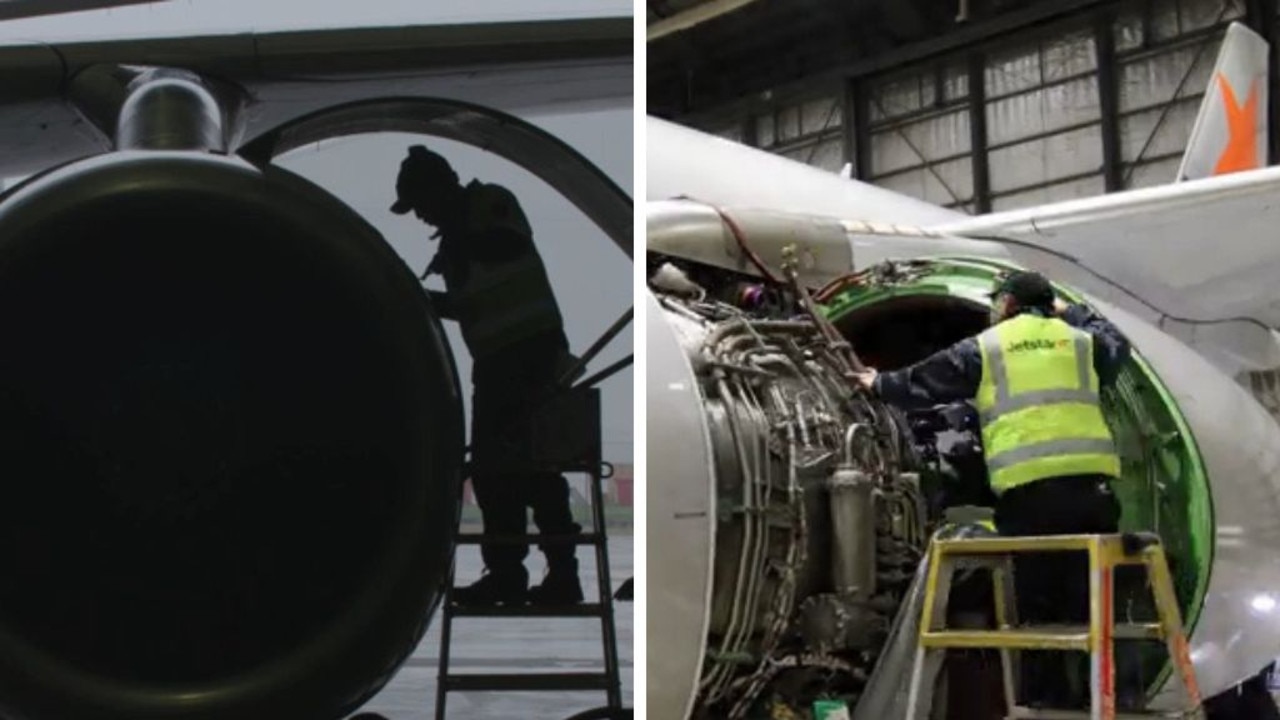Coronavirus Australia: What life will be like in virus lockdown
Italy’s lockdown has given us a chilling glimpse into our near future – and how much our daily lives will change is terrifying.

ANALYSIS
Empty streets. Shuttered stores. Hospitals on the brink of collapse. Italy is in the grip of a pandemic. And it’s on its way here.
Italy woke this morning to a dystopian nightmare.
The entire country is in lockdown.
It’s a drastic response to a spiralling crisis. Quarantines in its northern provinces failed to contain the COVID-19 virus. And thousands had time to flee after leaks revealed fresh lockdown plans at the weekend.
As a result, its embattled government has closed the entire national transport system.
It’s a desperate bid to slow the spread of the disease.
Italy’s health system is already on the edge of a meltdown.
1/ I may be repeating myself, but I want to fight this sense of security that I see outside of the epicenters, as if nothing was going to happen "here". The media in Europe are reassuring, politicians are reassuring, while there's little to be reassured of. #COVID19 #coronavirus
— Silvia Stringhini (@silviast9) March 9, 2020
RELATED: How Italy’s lockdown has affected Vatican City
Doctor Daniele Macchini, an intensive care specialist in Bergamo, took to Facebook to warn the world of what their future holds.
Macchini says just one week after starting seemingly “surreal” preparations, things have suddenly turned terribly real: “One after the other the departments that had been emptied fill up at an impressive pace. The boards with the names of the patients, of different colours depending on the operating unit, are now all red.”
Cases are multiplying. Beds are being set up in corridors.
“Suddenly the ER is collapsing,” Macchini says. “And there are no more surgeons, urologists, orthopaedists – we are only doctors who suddenly become part of a single team to face this tsunami that has overwhelmed us.”
ITALY’S ‘DARKEST HOUR’
For those not sick, life in Italy has completely changed.
They are cut off from each other. Cut off from the world.
They are afraid to step outside.
RELATED: Get the latest coronavirus updates
RELATED: Critical virus questions answered
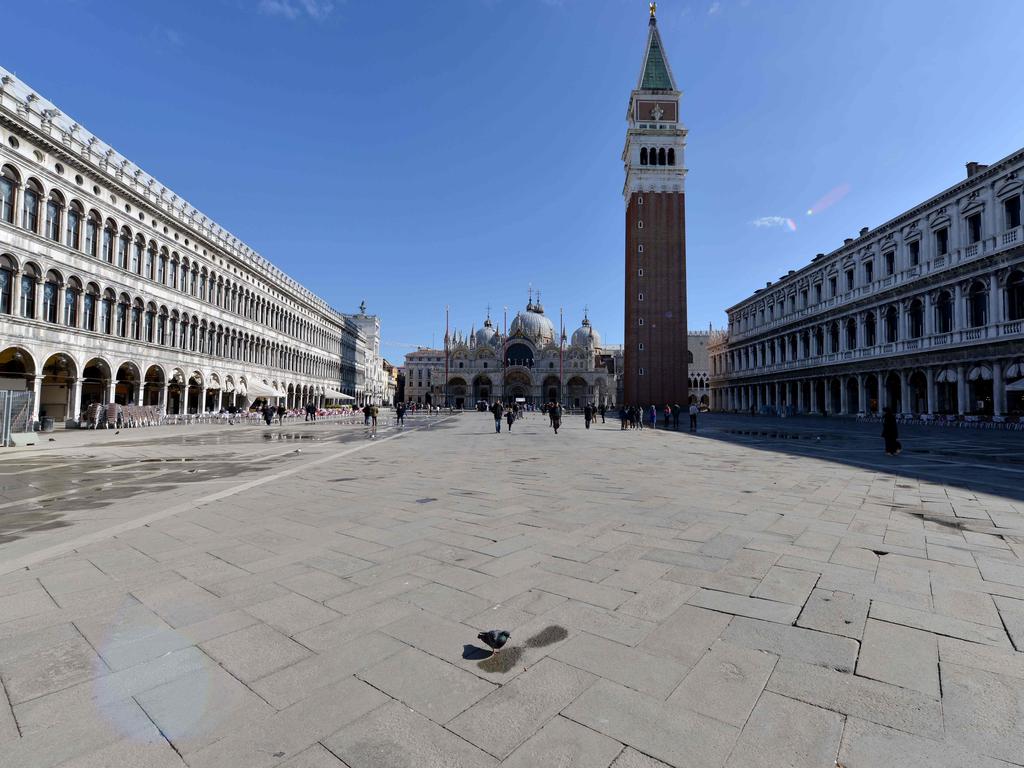
RELATED: What to do if you booked a trip to Italy in 2020
The country’s Prime Minister, Giuseppe Conte, has called the pandemic: “Italy’s darkest hour.”
It’s not yet clear how strictly his emergency services will enforce the nationwide lockdown.
His government’s message is deceptively simple: you need a “serious” reason to be allowed to travel anywhere. But, if you are caught away from home, you are allowed to return.
The lack of specifics, however, has Italians upset.
“Who can do what? Where can they go? Who can work? Who can travel? And what about borders with other countries?” Italy’s far-right League party head Matteo Salvini demands.
No answer has yet been provided.
Devastating #COVID19 situation in Italy,
— dr muge cevik (@mugecevik) March 10, 2020
8342 infections, 357 deaths as of today
45% have either no/minimal symptoms
22% of infections detected in age 19-50y
583 HCWs infected
In-hospital mortality figures are similar to early Wuhan data https://t.co/ryGw6ypDyS pic.twitter.com/HxuZTQp3cD
Meanwhile, the nation’s economy is grinding to a halt.
People have been asked to stay home.
Bans have been imposed upon all activities which draw crowds. Cafes and restaurants can still open – if they can guarantee a minimum 1m space between all customers. But fresh research indicates even this is not enough: COVID-19 appears capable of leaping 4.5m inside an airconditioned, enclosed space.
RELATED: Chilling photos of Italy’s virus patients
RELATED: What should I do if I’m sick?
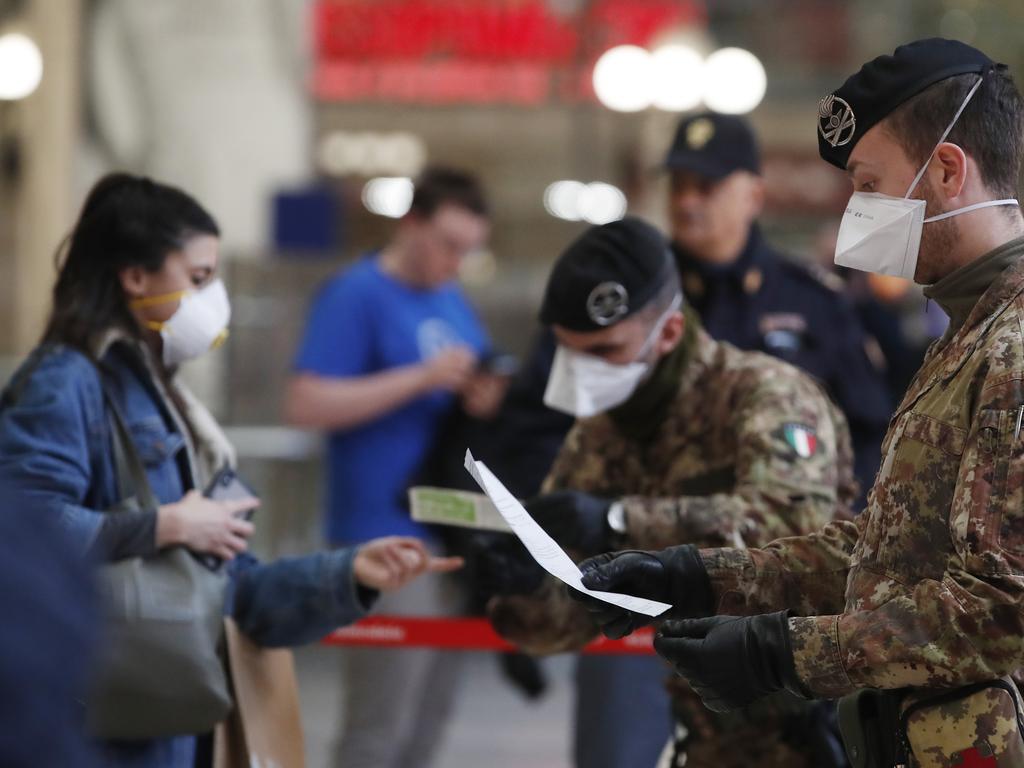
Schools and universities are already closed. The lights are out in cinemas and theatres.
All sports events have been postponed – unless they can be held without spectators.
Gyms and swimming pools remain open, but staff must enforce strict new rules. These include comprehensive handwashing and 1m personal space between all customers at all times.
Churches are closed, as is any similar close gathering. Even civil and religious ceremonies – such as weddings and funerals – are banned.
And police checkpoints have been established at transport hubs, interrogating travellers as to the importance of their journey.
AUSTRALIA: BE WARNED
“Italy, as the European country at the forefront of the crisis, has had little to draw on except the response in China,” writes professor of politics Martin Bull.
“There, a hard-line government policy appears to be working but it becomes a different matter when a non-authoritarian country needs to take action.”
Democracies such as Australia must take note of how things pan out in Italy, he says.
COVID-19 is already here. A response will be needed.
Fortunately, Australia has the templates of China, Italy and South Korea to guide its actions.
And Italy’s the closest cultural and political comparison we have.
Social distancing policies seem almost certain.
What does that mean?
OK guys. China controlled it. South Korea is controlling it. Singapore is controlling it. Taiwan is controlling it. Hong Kong is controlling it. Can we please motivate leaders in our Western countries to do the same? We can learn from Asia and we can do it too!!!
— Florian Krammer (@florian_krammer) March 10, 2020
It’s a good bet you won’t be ordered to stay in your homes, as with Wuhan.
But do anticipate restrictions on movement, as with Italy.
Expect to be asked to stay at home for 14 days if feeling unwell. Expect to be asked to limit your exposure to others.
Expect more and more schools and universities to be closed.
Events will be cancelled – at first by concerned organisers and then by government order. Festivals. Sports. Concerts. All are likely to be affected.
RELATED: ‘Doctor’s warning: It’s not going to be OK’
RELATED: Red zone: Italy entirely in lockdown
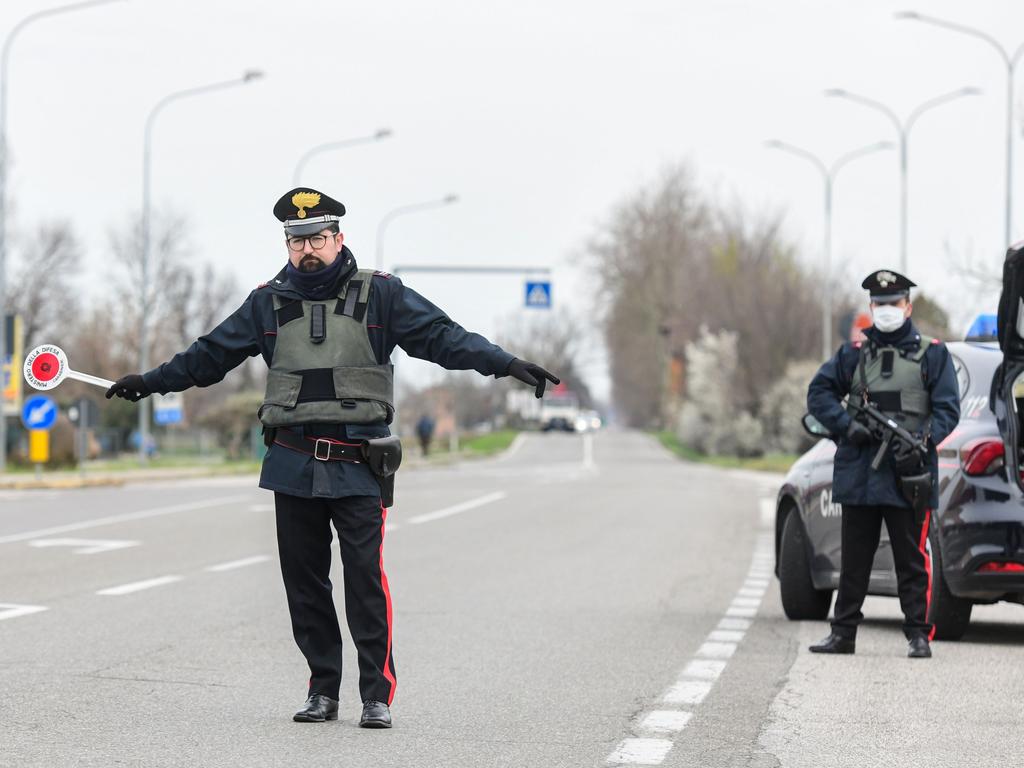
Religious services will be curtailed. This is already happening in the US.
The movie industry is bracing for a billion-dollar-loss as cinemas empty. It’s a similar story for gyms, as customers shy away.
Outdoor eateries and beer gardens could grow in popularity. Indoors may suddenly become roomier as “rack’em pack’em stack’em” turns politically incorrect: “social distancing” are the buzz words.
Air, bus and rail services face restrictions. Corporate and business meetings will be held online. Those who can work from home should practice doing so.
Demand for delivery services could either fall – or spike. Grocery deliveries may be preferable to visiting the supermarket, for example.
And, as with Italy, once the pandemic takes hold – expect police checkpoints and questions as to whether you really need to go where you’re going.
“The jury is still out on whether Italy has successfully struck the right balance,” Bull writes. “It may not be long before other nations need to decide if the Italian response to the coronavirus is a model to follow or a lesson to be learned.”
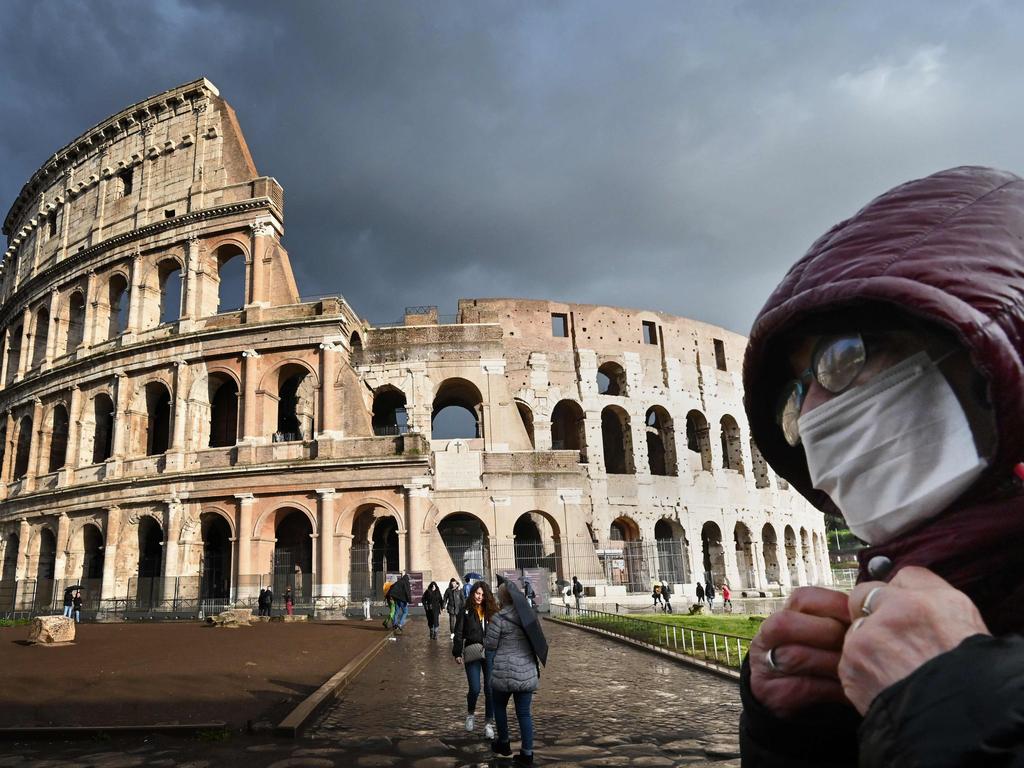
COVID-19 CHAOS
Milan-based psychoanalyst Pina Antinucci told AFP she felt the Italian government was “bombarding us with anxieties, spreading paranoia. I’d like to know if I’m infected … it would be better to know if I have that unwanted guest who occupies our homes, minds and lives.”
Venice – where residents usually complain about being overwhelmed by tourists – is virtually empty. Giancarlo of Venice told AFP the lockdown had been a “big blow”. “First the city was hit by record floods, now this. Venice is very fragile right now,” he said.
But Dr Macchini’s plight explains why the lockdown is in place.
If you know a medical worker - at any level - give them a hug. They're in for a hell of a time ... #COVID19 https://t.co/QBcdkJ9BxF
— Jamie Seidel (@JamieSeidel) March 10, 2020
“The staff is exhausted. I saw the tiredness on faces that didn’t know what it was despite the already exhausting workloads they had … Doctors who move beds and transfer patients, who administer therapies instead of nurses.
“Nurses with tears in their eyes because we can’t save everyone, and the vital parameters of several patients at the same time reveal an already marked destiny.”
Experts have been saying for weeks now that cancelling public events is the best way to slow the spread of the virus. Many major events have heeded this advice. But many more have not.
It’s all about “social distancing”: keeping people far enough apart so COVID-19 cannot easily make the jump.
It won’t eliminate the chance of getting the disease.
But it will slow the rate at which it spreads.
RELATED: Biggest coronavirus myths busted
RELATED: 3000 Australians could die from virus
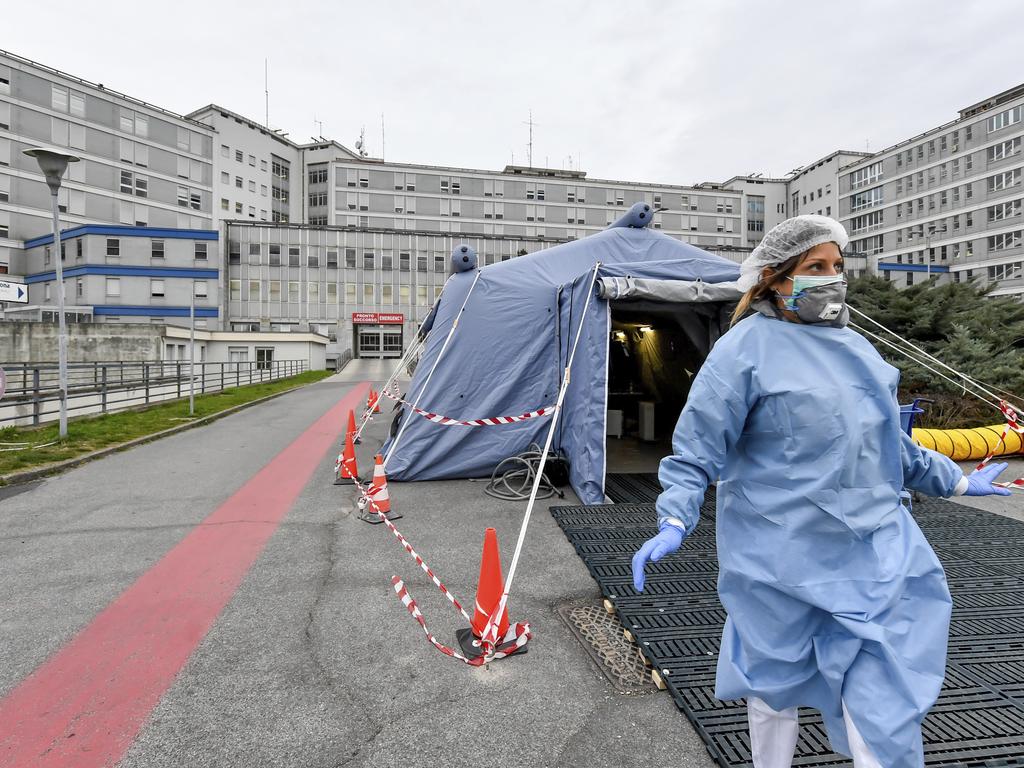
While the Bergamo hospital was warned, Dr Macchini says nobody expected this.
“Cases are multiplying, we arrive at a rate of 15-20 admissions per day all for the same reason. The results of the swabs now come one after the other: positive, positive, positive … Reasons for access always the same: fever and breathing difficulties, fever and cough, respiratory failure. Radiology reports always the same: bilateral interstitial pneumonia, bilateral interstitial pneumonia, bilateral interstitial pneumonia. All to be hospitalised.”
South Korea's #Covid19 Monday numbers aren't up yet but I just looked at yesterday's (+248 cases & 1 death). It contains a very cool graph that shows the trajectory of their outbreak. It's impressive. They've been aggressive, and it's paying off. pic.twitter.com/gfNjLxVIcd
— Helen Branswell (@HelenBranswell) March 10, 2020
There’s nowhere near enough capacity to treat them.
“Every ventilator becomes like gold: those in operating theatres that have now suspended their non-urgent activity (and) become intensive care places that did not exist before.”
All pretence of following shifts and occupational-health-and-safety practices have been abandoned. Staff are tired. They are making mistakes.
“We no longer see our families for fear of infecting them. Some of us have already become infected despite the protocols,” Macchini says. “(Don’t) go to the theatre, museums or the gym. Try to have pity on the myriad of old people you could exterminate.”
Jamie Seidel is a freelance writer | @JamieSeidel

